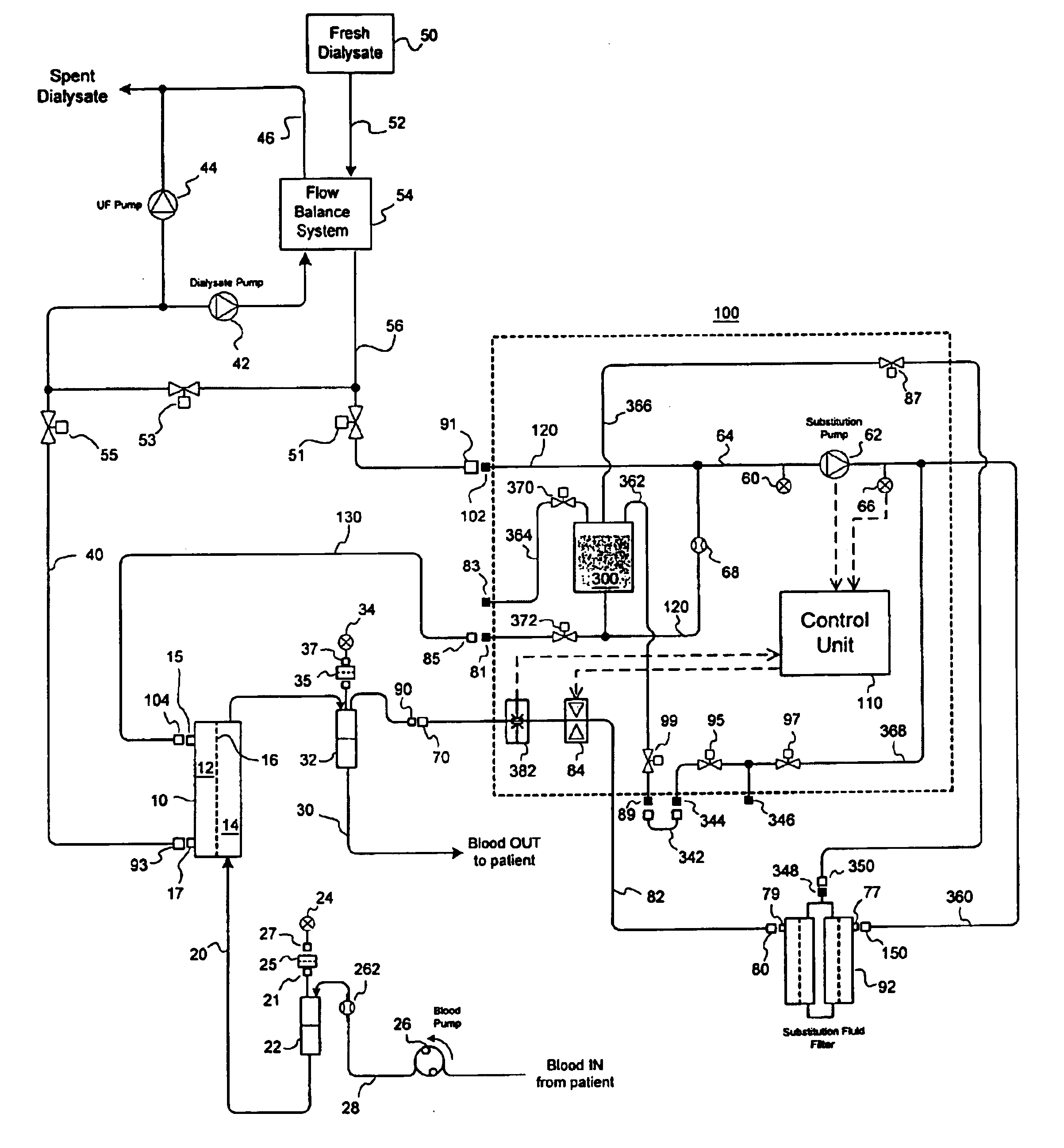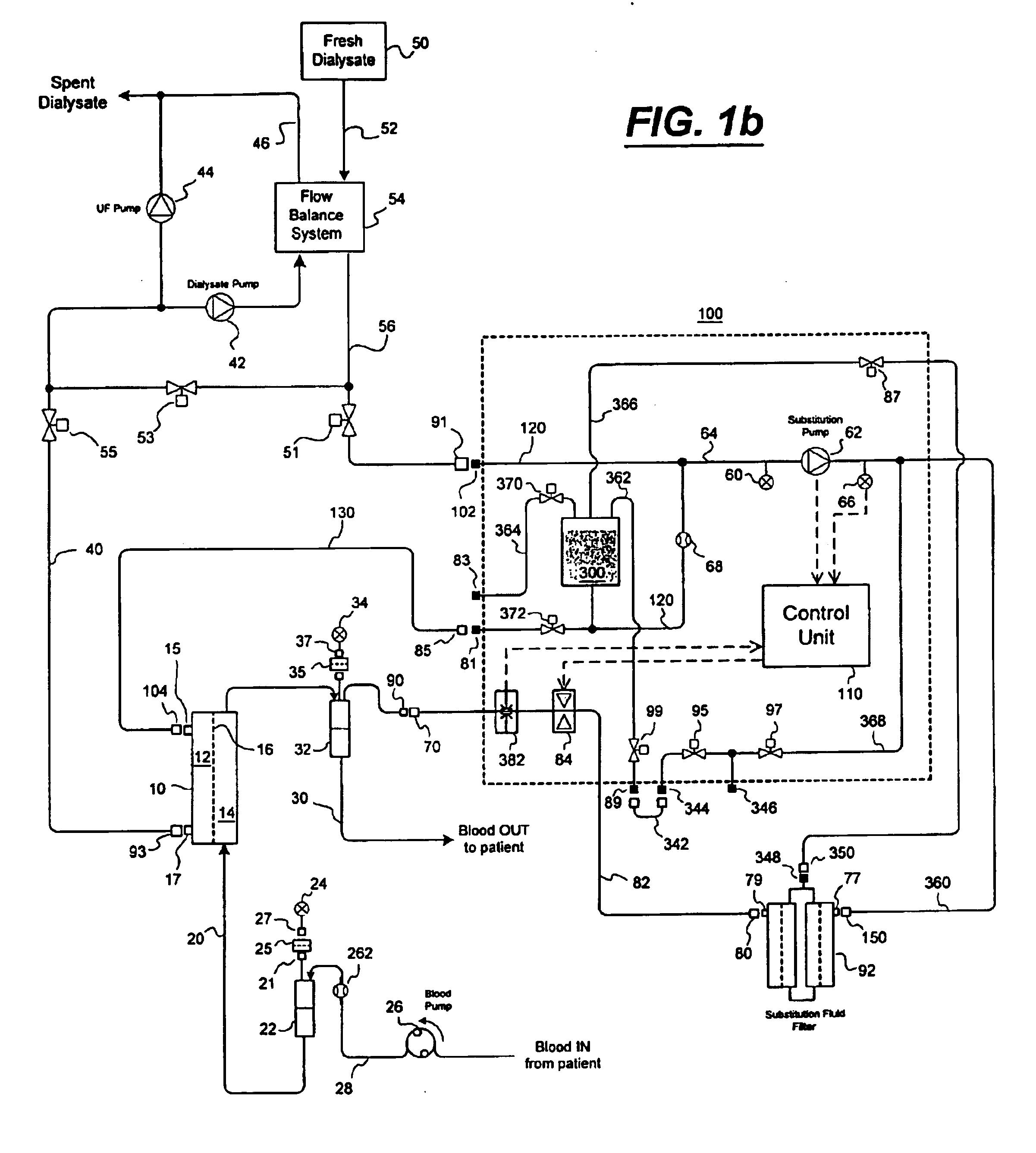Method and apparatus for a hemodiafiltration delivery module
- Summary
- Abstract
- Description
- Claims
- Application Information
AI Technical Summary
Benefits of technology
Problems solved by technology
Method used
Image
Examples
second embodiment
[0057]Reference is now made to FIG. 4 which shows yet another embodiment of the invention. In this embodiment, blood flow is sensed using a tachometer device 270 that measures the rotational speed of the blood pump 26. An example of a tachometer 270 that can be used is a non-contacting phototachometer such as supplied by Cole Parmer Instrument Company, Vernon Hills, Ill. Here, a piece of reflective tape is applied to a rotating member of the blood pump 26 while the phototachometer monitors the time interval between successive passes of the reflective tape. Operation is then similar to the second embodiment which looked at pressure pulses as a means to sense blood flow.
fifth embodiment
[0058]In the invention, with reference now being made to FIG. 5, blood flow sensing is accomplished using a linear photodiode array 272, such as supplied by Integrated Vision Products AB, Linkoping, Sweden. The linear photodiode array 272 is positioned near one of the drip chambers, preferably the arterial drip chamber 22 of the extracorporeal blood circuit, such that it can be used to monitor relative changes in fluid level. For example, one may detect when the blood pump 26 is ON or OFF by detecting the occurrence of fluid level fluctuations in the drip chamber 22 as the result of the peristaltic nature of the roller type blood pump 26. For control purposes, the signal from the linear photodiode array 272 is sent to the control unit 110 as a feedback control input. If no fluid level fluctuations are detected, the substitution pump 62 can be turned OFF and the system put in a safe state.
sixth embodiment
[0059]Reference is now made to FIG. 6 showing the invention. In this embodiment, dialysate and blood flow are indirectly sensed by inductively monitoring the current supplied to the inlet dialysate valve 51 and the motor that drives the blood pump 26. This may be accomplished by placing inductive current clamps 162 and 108 around the wires leading to the dialysate inlet valve 51 and the blood pump 26 respectively. An example of an inductive current clamp that can be used is the Fluke DMM current clamp supplied by Techni-Tool, Plymouth Meeting, Pa. Control of the diafiltration delivery module 100 may then accomplished by using the signals from the inductive current clamps 162 and 108 as feedback control inputs to the control unit 110. If a current is sensed flowing through the dialysate inlet valve 51 and through the blood pump 26, it can be assumed dialysate flow is passing through the diafiltration delivery module 110 and that blood flow is flowing through the extracorporeal circui...
PUM
| Property | Measurement | Unit |
|---|---|---|
| Temperature | aaaaa | aaaaa |
| Pressure | aaaaa | aaaaa |
| Flow rate | aaaaa | aaaaa |
Abstract
Description
Claims
Application Information
 Login to View More
Login to View More - R&D
- Intellectual Property
- Life Sciences
- Materials
- Tech Scout
- Unparalleled Data Quality
- Higher Quality Content
- 60% Fewer Hallucinations
Browse by: Latest US Patents, China's latest patents, Technical Efficacy Thesaurus, Application Domain, Technology Topic, Popular Technical Reports.
© 2025 PatSnap. All rights reserved.Legal|Privacy policy|Modern Slavery Act Transparency Statement|Sitemap|About US| Contact US: help@patsnap.com



